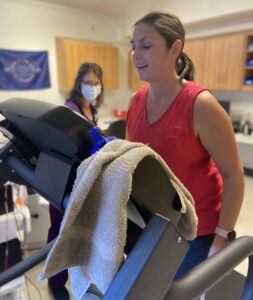Research Services
Click here for a full service list across all School of Medicine Research Cores
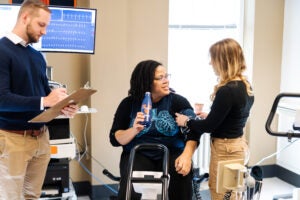
Steps to get started
Investigators with new protocols should contact the research team at lms5a@uvahealth.org to set up a consult. The research team will need a copy of your IRB approval and consent if you have completed these steps, or your proposal if not and will discuss your needs and time line. We are here to help you each step of the way, from protocol design to data collection and management.
For information regarding the EPCL, contact Lisa Farr
The department can provide data if your studies involve:
- Exercise testing (CPET/VO2peak)
- Body composition (Bod Pod, circumferences)
- Measures of functional fitness (Six-minute walk test)
- Exercise training
- Resting metabolism
- Weight loss
- Vascular health
Investigators are using the EPCL in studies on:
- Heart failure
- Myocardial infarction
- Cancer
- Metabolic syndrome
- Peripheral arterial disease
- Type 1 and 2 diabetes
- Morbid obesity
- Appetite hormones
- Vascular health in post-menopausal women
Services
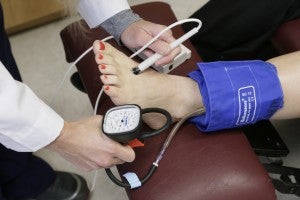
Ankle brachial index is a quick test that provides information about leg circulation. This test uses blood pressures measurements on the arms and legs to compute a ratio and can be performed at rest and after an exercise stress test or any activity that causes the patient to develop claudication symptoms.
- Circumferences (waist, abdomen, and hip)
- Diameters
VO2 max, or maximal oxygen consumption, refers to the maximum amount of oxygen that an individual can utilize during intense or maximal exercise. This test is typically used in research studies before and after an exercise intervention, new medication, new device therapy, or to track disease progression. In addition the VO2 test provides information for more precise exercise prescription in training studies. The subject wears a metabolic mask and EKG, and testing can be performed on a treadmill, bike, or recumbent bike. In addition to metabolism, EKG, and heart rate data, blood pressure, oxygen saturations, and rating of exertion or pain are monitored. Lactate and glucose measures are available, as is real-time caloric expenditure.
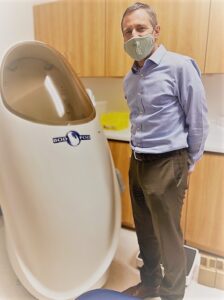 Percentage body fat
Percentage body fat- Fat mass
- Fat-free mass
Track distance, heart rate, blood pressure, oxygen saturations, perceived exertion, and pain during timed walk tests, such as the 6-minute walk, the Incremental Walking Test, and the Endurance Shuttle Walk. This test uses our long hallway and is a practical method of assessing function. Other tests available upon request.
Ultrasound measurement of flow mediated dilation of the brachial artery in response to a research stimulus.
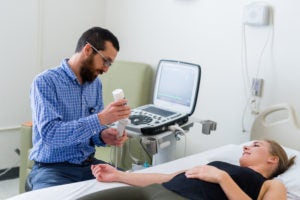
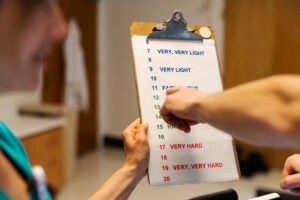 Physical activity questionnaires can be used to estimate total caloric expenditure and intensity of activity over a given period of time.
Physical activity questionnaires can be used to estimate total caloric expenditure and intensity of activity over a given period of time.
 Assistance with grant submission and protocol development. This service can also be used for subject recruitment and follow up, home exercise/activity over-sight, and date entry.
Assistance with grant submission and protocol development. This service can also be used for subject recruitment and follow up, home exercise/activity over-sight, and date entry.
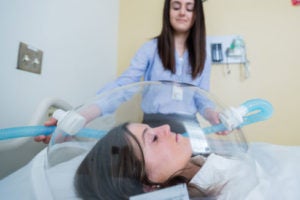 Measurement of metabolism in a supine, fasted state to determine caloric requirements and substrate utilization.
Measurement of metabolism in a supine, fasted state to determine caloric requirements and substrate utilization.
Ultrasound imaging during recumbent cycling for real time measures of heart function during exercise.
Guided supervised exercise training on a bike or treadmill with or without EKG or metabolic monitoring. Track heart rate, blood pressure, perceived exertion, and pain during prescribed exercise to enhance adherence to study exercise guidelines. Without supervision, subjects exercise but probably not at the level you want them to do. Exercising in the lab helps with study adherence and safety.
We also provide home exercise oversight and guidance if the study protocols calls for home exercise.


